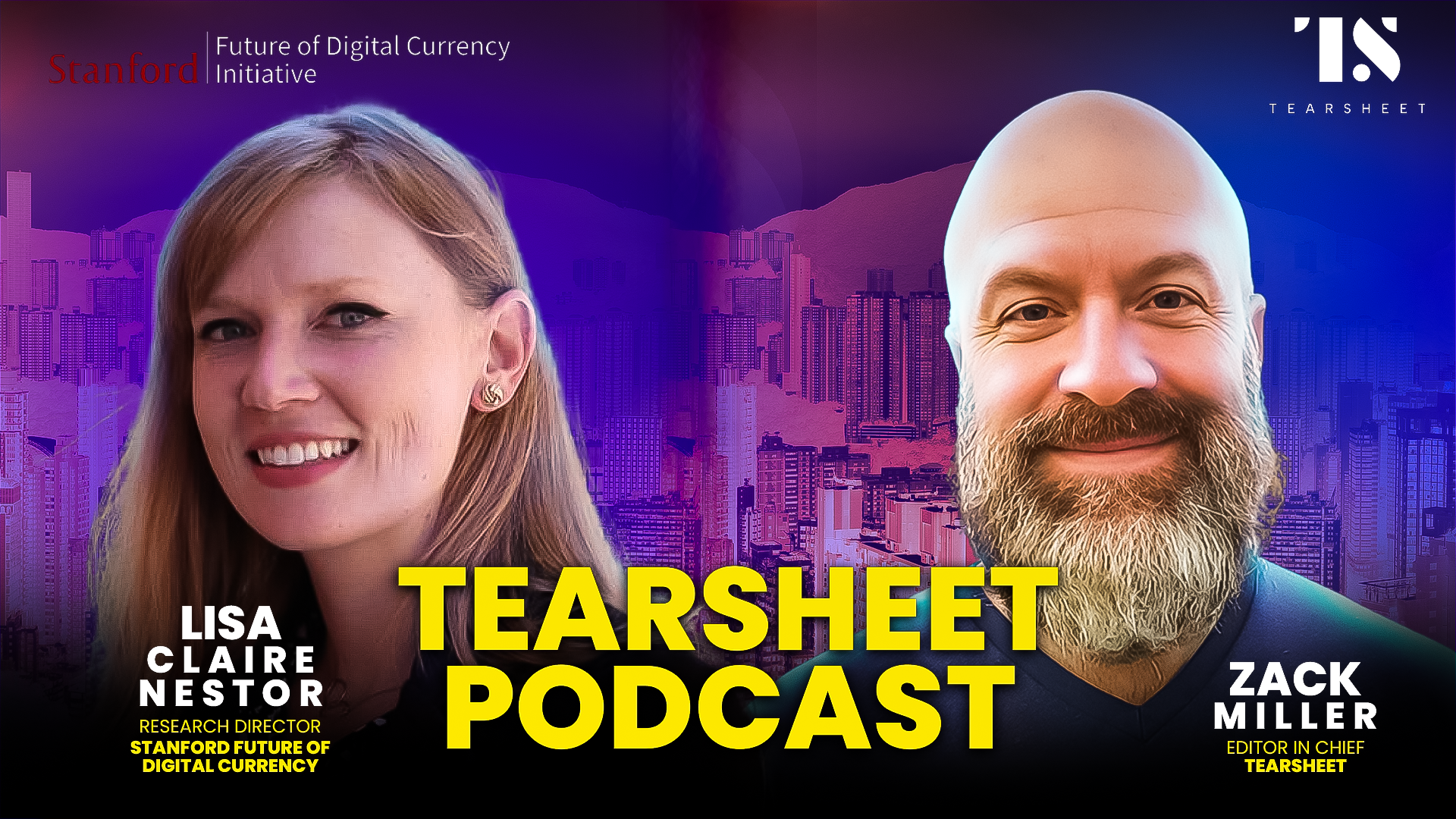Can cryptocurrency and blockchain drive fintech innovation? Stanford’s Lisa Nestor weighs in
- Looking for insights into how cryptocurrency could impact global finance, including cross border payments, lending and a more inclusive economy?
- We talk with Lisa Nestor from the Stanford Future of Digital Currency Initiative, who shares how blockchain technology, stablecoins, and digital assets are reshaping financial access and opportunities worldwide.

Could cryptocurrency be the key to bridging financial gaps? Can it create a more inclusive global economy?
Digital assets like stablecoins and blockchain technology are reshaping how we think about money. Their potential to level the financial playing field is becoming clearer. In today’s episode of the Tearsheet podcast, I sit down with Lisa Nestor, Research Director at the Stanford Future of Digital Currency Initiative to discuss how fintech innovation is paving the way for broader financial inclusion.
Lisa’s expertise spans blockchain technology, cryptocurrency, and fintech innovation. This makes her a leading voice in understanding the intersection of these fields.
Lisa’s career reflects a deep commitment to financial inclusion.
“When I started researching Stellar,” Lisa shares. “It brought together what I had seen [and demonstrated] the power of providing open-source financial infrastructure.” This passion for creating accessible financial systems has guided her work. It also included her current research on stablecoins and digital dollar adoption.
Lisa explains how cryptocurrency, stablecoins, and blockchain can make finance fairer. Her insights show how these innovations affect cross-border payments and financial inclusion. She also discusses their role in the evolving fintech landscape.
Cryptocurrency and Financial Inclusion
Cryptocurrency has the potential to address the uneven access to financial services worldwide. Blockchain technology allows people in underserved regions to access digital wallets and stablecoins.
With new financial tools, more people can save, transact, and even earn. “Access to financial services is not an even playing field,” Lisa notes. “Distributed ledger technology can help level that field. It can do so by providing accessible and stable financial options.”
Stablecoins: Beyond Trading to Real-World Impact
Stablecoins are already impacting cross-border payments and savings in regions with unstable economies. Lisa highlights Argentina as a case study. She says, “Argentina’s economic situation has created a huge demand for digital dollars, with stablecoins playing a crucial role in hedging inflation and providing financial security.”
Digital Dollar Economy and Cross-Border Payments
Lisa emphasizes how digital dollars simplify cross-border payments, especially for regions with limited traditional banking infrastructure. “Being able to hold a stablecoin in a digital wallet and earning some yield on it is a small but significant step towards democratizing finance,” she says.
Tokenization of Real-World Assets
Another emerging trend Lisa identifies is the tokenization of real-world assets (RWA). Blockchain makes traditionally illiquid assets, like real estate and art, more liquid.
This opens up global markets. “This approach improves liquidity. It makes these assets move seamlessly across the globe,” Lisa explains.
Fintech Trends in Digital Asset Adoption
Lisa explores CBDCs (Central Bank Digital Currencies) and private stablecoins. She looks at how governments and businesses are adopting digital assets. She also discusses the opportunities and challenges they face. “Most central banks are researching how to launch CBDCs without negatively impacting their banking industry,” she says. Lisa highlights a cautious yet growing interest in these tools.
The Big Ideas
1. Open financial infrastructure creates a global ledger accessible to all. “The idea is to create a ledger that every financial institution in the world can operate on but can’t buy. It is open and available to everyone.”
2. Stablecoins provide financial security in unstable economies. “In emerging markets like Argentina, stablecoins offer a way to hedge inflation. They secure savings amidst economic instability.”
3. Tokenizing real-world assets improves liquidity and global accessibility. “Tokenizing existing assets brings improved liquidity and global accessibility to traditionally illiquid markets.”
4. Governments explore CBDCs to complement existing banking systems. “Central banks are focused on introducing CBDCs that complement. Rather than compete with, existing banking systems.”
5. Digital dollars empower individuals in the gig economy. “More individuals are earning in digital dollars through online work. This is creating new economic opportunities without physical migration.”
Listen to the full episode
Subscribe: Apple Podcasts I SoundCloud I Spotify






